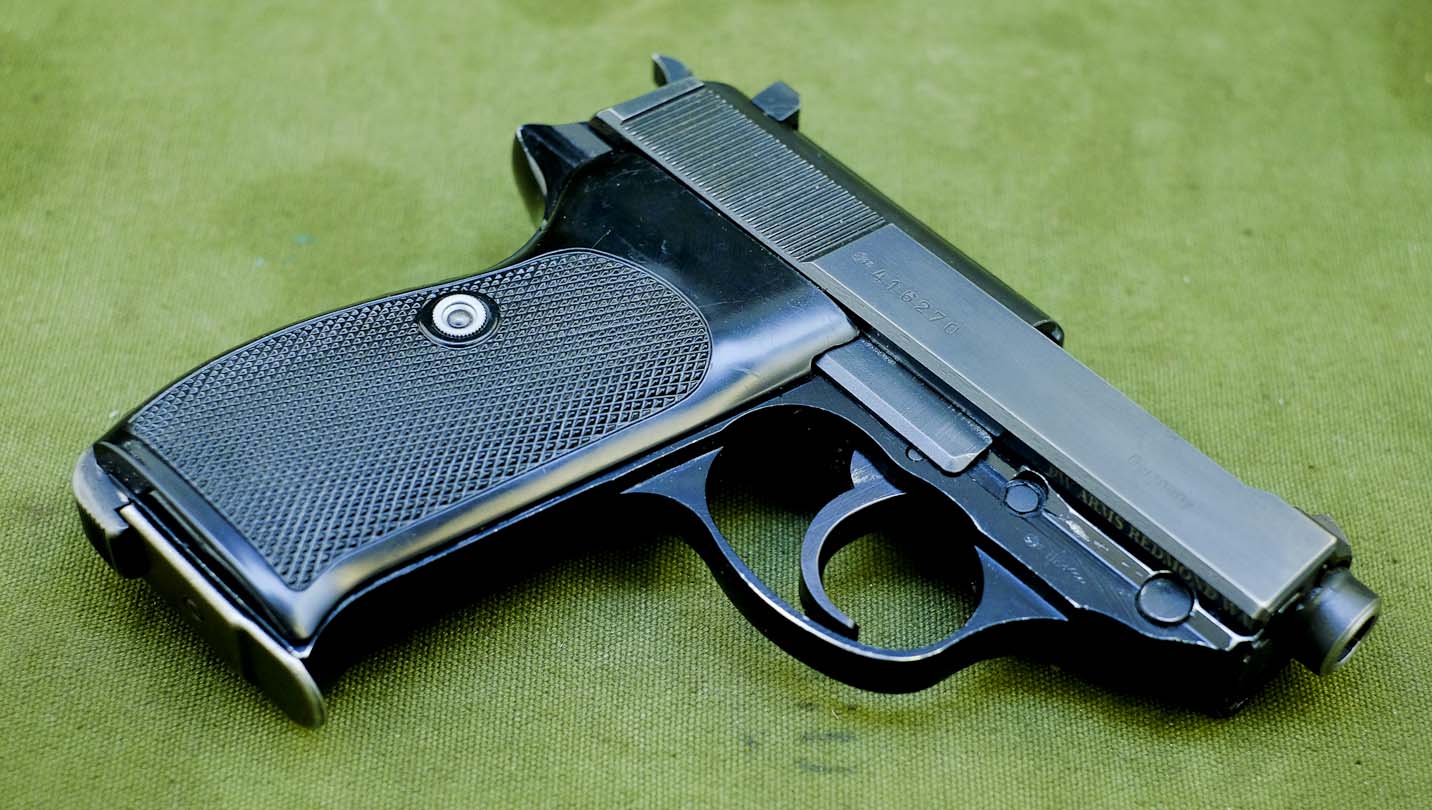

The trigger stop was still adjustable by means of an adjustable grub screw, as with the utility models of the Walther P88. The pull-off resistance is 14 N as standard, but could be individually reduced to approx. The trigger is released after an advance of 3.3 mm. The manual, force-neutral securing was retained. 1) and the relaxation device for the hammer were also omitted. The automatically acting, non-positive vertical barrier safety device (No. The locking system corresponds to the "Compact"'s, but the pull trigger (DA) was omitted. Was produced 1993 to 2000, it was a sporting variant of the Compact model with a 101 mm long barrel. 7000 purely commercial units were produced. In 2000, the production of the Walther P88 "Compact" was stopped after approx. The list price of a USP was around 1000 DM at the end of 1992 that of a Walther P88 “Compact” at just under DM 1800. Pricing also played a heavy part in P88 Compact not being chosen.
#Walther p1 barrels manual#
Compact variant lost to Heckler & Koch's P8, which was a slightly modified USP with regard to barrel bearings, manual safety and magazine design. As with the Walther P38, Walther PP and Walther PPK, this safety device also works again as a release device for the hammer.īoth the standard and compact models are fully ambidextrous with the exception of the compact's slide stop/release.Īfter the Bundeswehr had initially rejected the Walther P88, the "Compact" was subsequently submitted during the follow-up pistol trials which lasted until 1993. 1 of the Walther P88) with the purely form-fitting firing pin lock. The “manual” safety supplemented the force-fit vertical barrier, automatically controlled by the trigger, with longitudinal locking of the firing pin (fuse no. The reason for this was the police and military tenders, which just called for them. There was a significant technical change in the safety system: Instead of the single operating lever and the 4 automatically acting safety devices, a "manual" safety device was again integrated in the slide. The standard P88 was heavily criticised for being bulky, heavy and expensive the Compact solved some of these issues. With a comparable cross-section, these stranded springs have a somewhat smaller spring constant due to the lower edge stresses, which counteracts material fatigue. The closing spring no longer consisted of just one solid wire, but of three thinner individual wires twisted together. The coordinated Browning-Petter system of the Walther P88 was retained. The Compact is lighter and a bit smaller with only minor differences. In 1997, year after standard model was discontinued, Carl Walther GmbH introduced the P88's successor, the Walther P99 to markets. The production of the P88 Compact - the slightly lighter and smaller, which was also cheaper to manufacture - variant continued up until year 2000. In 1996, Walther discontinued the standard version. Again, it was rejected due to a lack of manual safety. The Walther P88 also took part in the 1990 Bundeswehr pistol tests held by WTD91 military technical department. The sales of the standard model started in 1988 for the 50th anniversary of the legendary Walther P38. Ultimately, the Beretta 92F (92SB-F) would be chosen as the M9 pistol.

The P88 also failed both the wet and dry mud tests. Also, the P88 failed the dropping tests, with the rear target sights popping off and the pistols frames cracking from 7000 rounds of sustained fire. Firstly, it lacked the specified manual safety function. During the trials, the Walther P88 ended up being eliminated from consideration for not meeting a handful of the 72 “must” conditions. The Walther P88 was entered for the third and final JSSAP XM9 pistol trials conducted in 1983 to 1984 with interruptions. It was also Walther's contribution to the US Army's Joint Service Small Arms Program (JSSAP XM9) handgun trials. The designation “88” was chosen when the civilian marketing began in 1986/1987 in view of the 50th anniversary of the legendary Walther P38. With the P88, Walther had the intention of being able to offer the German armed forces an adequate successor for the aging Walther P1. The Walther P88 was mainly designed as a sidearm for military and law enforcement use. The reasons for this were that with this type of breech and the barrel bearing specially refined by Walther for the P88, a higher shot precision, a narrower breech structure and simplified production could be achieved. Walther P88 uses a modified Browning system, rather than Walther P38 (or P1)'s swing bolt lock. Walther was able to fall back on more than 50 years of experience with the dural grip of the Walther P1, which initially did not achieve the specified break and abrasion resistance. To save weight, the handle is made of duralumin.


 0 kommentar(er)
0 kommentar(er)
